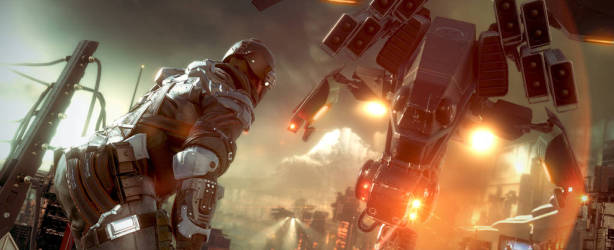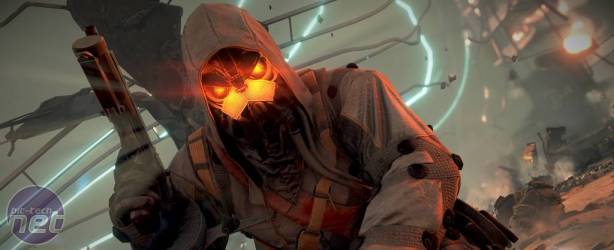Killzone: Shadow Fall Review
November 29, 2013 | 10:34
Companies: #sony #sony-computer-entertainment

Killzone: Shadow Fall Review
Developer/Publisher: Sony Computer EntertainmentUK Price: £44.99
Platform(s): PS4
The PlayStation 4 might not have the world’s most exciting launch line-up, but it does have one exclusive good enough to justify the cost of a new console, even if it’s not quite what you might call a killer app. Up to a point, Killzone: Shadow Fall does everything you’d want from a flagship launch title. It’s one of the few next-generation console games to deliver true next-generation visuals, and it’s been put together with a little thought as to what more processing power and more RAM could bring to the FPS. If it falls short of greatness, it’s because it doesn’t quite follow through on these ideas. Whether through design or circumstance, it gives you glimpses of a new kind of Killzone, but not exactly the real deal.
Let’s kick off with the graphics. Killzone: Shadow Fall looks amazing, and there’s a lot of really interesting work going on under the surface. Beneath the high-polygon-count models and high-resolution textures you’d expect from any next-gen title, Shadow Fall is using a modelling system that has each structure tagged with a material – rock, brick, fabric, foliage, etc. These material tags are then used to determine complex real-time sound reflections and create more realistic surfaces. It’s also then used to calculate an approximation of ray-traced lighting, which cleverly blends pre-baked light maps, ray-traced reflections and reflecting light sources in the same scene.
You might need a technical backgrounder to understand what that all means, but you won’t to see the effects. Killzone: Shadow Fall equals Battlefield 4 and Crysis 3 in terms of luxuriant detail, but trumps both when it comes to lighting, with the most impressive bloom effects, real-time shadow-casting, volumetric fog and intense beam-of-light to the face effects we’ve seen. And it uses all of these visual tools to paint a convincing picture of a sci-fi world where towering neon-lit skyscrapers stand in sprinting distance of the most hideous industrial slums. This isn’t a case of graphics for graphics sake, but of graphics that make a fantasy world come alive.
If you’ve played previous Killzones then you’ll already know the basics of that world. Years have gone by since the destruction of the planet Helghan in Killzone 3, and its charming orange-goggled neo-fascist rulers, the Helghast, have been relocated to the homeworld of their conquerors, Vekta. Impoverished and ghettoised behind a huge defensive wall, the Helghast don’t exactly work hard to fit in. The game begins with the brutal eviction of the remaining Vektan population, before skipping some years to follow a young Shadow Marshall as he does his best to stop a Helghast plot that threatens the Vektan people.
Shadow Fall’s plot isn’t going to win any awards for subtlety, depth of character or unexpected twists, but compared to your average Call of Duty or Battlefield it’s a model of nuance and studied ambiguity. Like Bioshock or Specs Ops: The Line, it wants you to think about the world, what you’re doing in it and why you’re doing it, and while not all of it works, the more you play the more you question your hero’s values. In a way, it’s a continuation of Killzone 2’s more ambivalent approach to epic sci-fi, and Shadow Fall doesn’t want to be just another blockbuster action game; it wants to be a thinking persons’ shooter.
That desire flows over to the gameplay. Where previous Killzones felt like a mix of Halo’s sci-fi setting and emergent AI with Call of Duty’s grittier style and Gears of War’s cover-based combat, this one shows hints that someone at Guerilla has been playing Deus Ex: Human Revolution and Dishonored. You’re no longer a grunt battling on the frontline but an agent working behind enemy lines. The levels are larger, with more open space for exploration, and you have a handy gadget- the OWL – which opens up more creative possibilities.
The OWL is a portable drone which can be deployed to attack Helghast forces, hack alarms and terminals or set up a temporary zip-line to get rapidly from one place to another. It’s a great tool for laying down suppressive fire while you outflank your targets, or for causing a distraction while you deal with armoured foes. Combined with a handful of genuinely massive levels, there’s scope here for a more freeform style of shooter than we’re used to seeing on console.

MSI MPG Velox 100R Chassis Review
October 14 2021 | 15:04












Want to comment? Please log in.